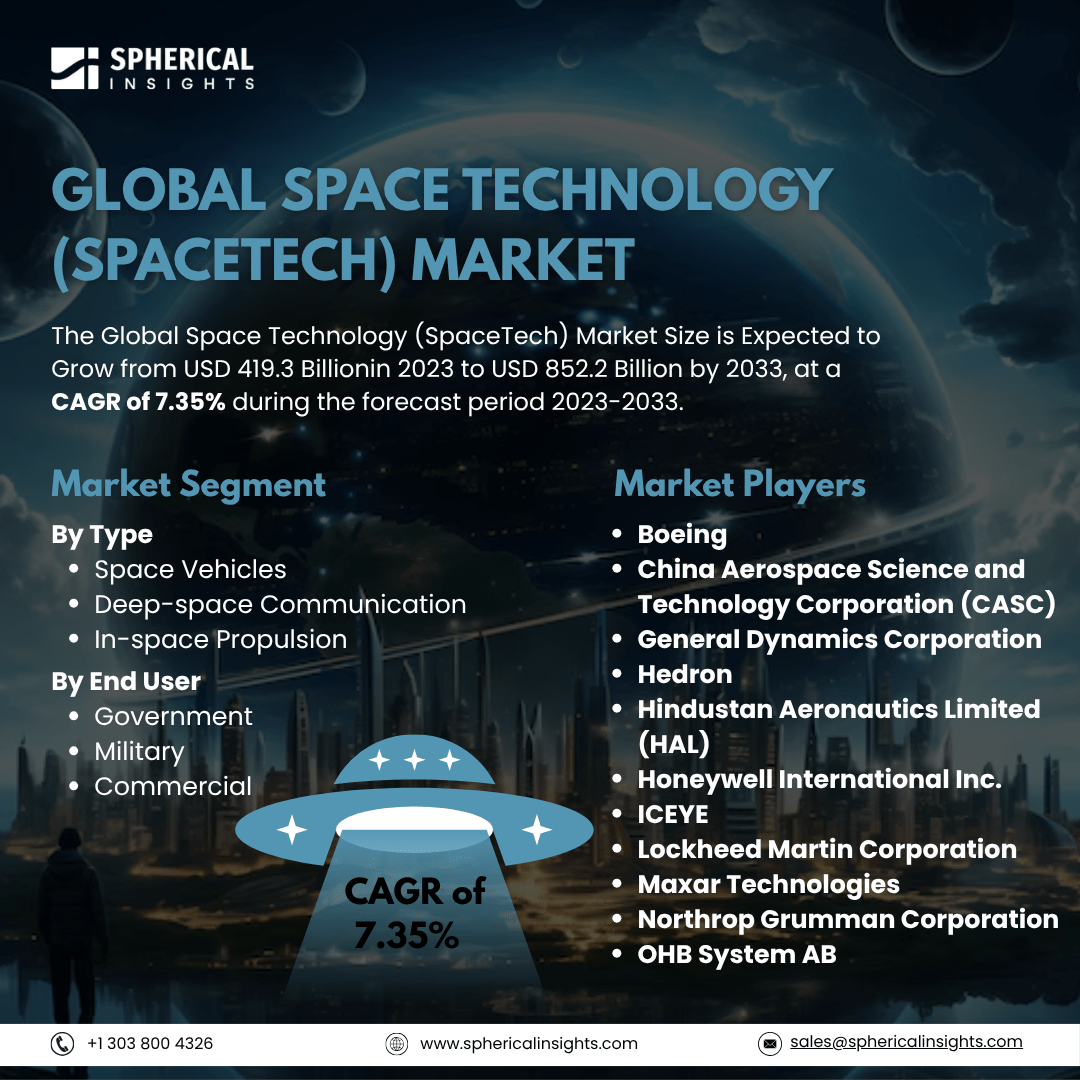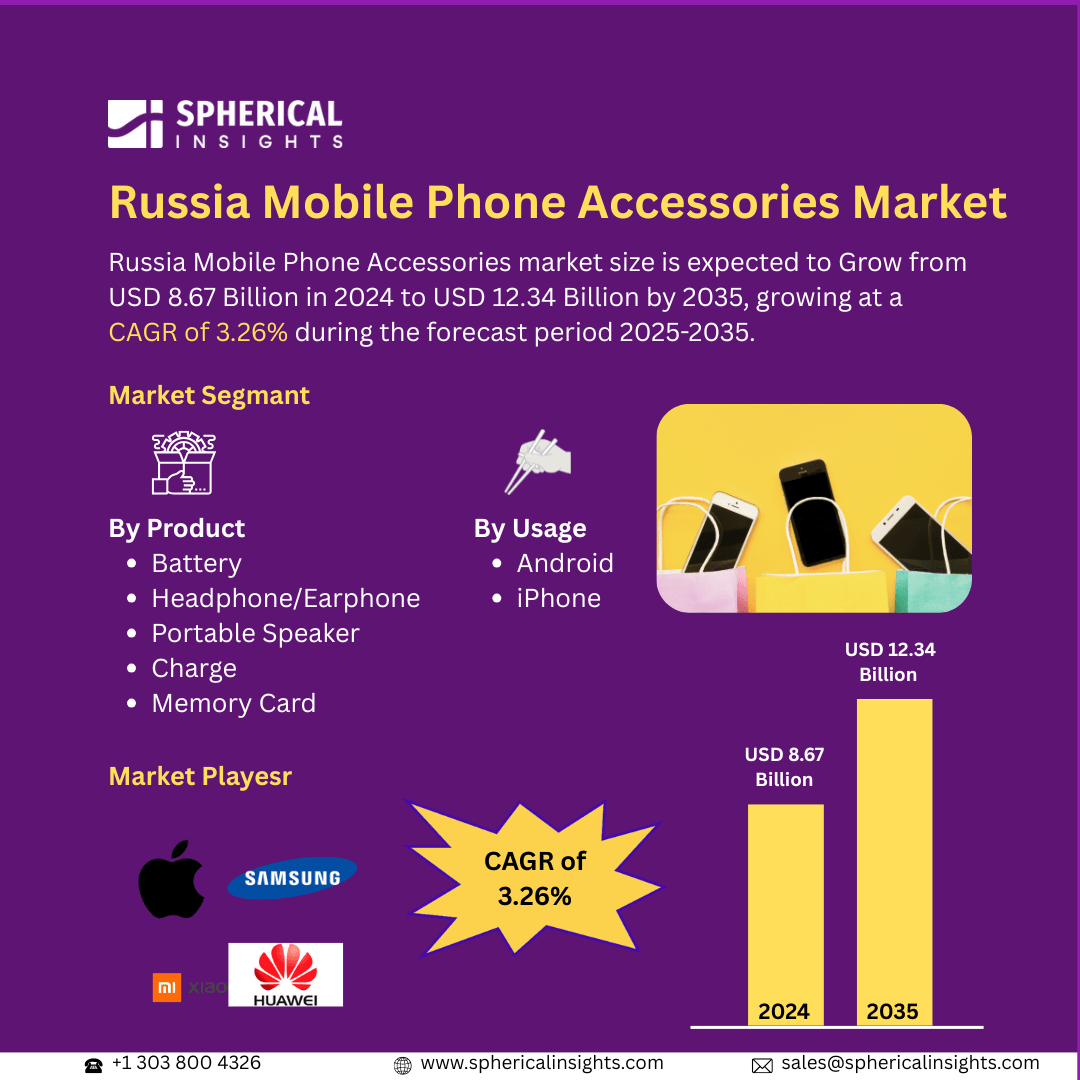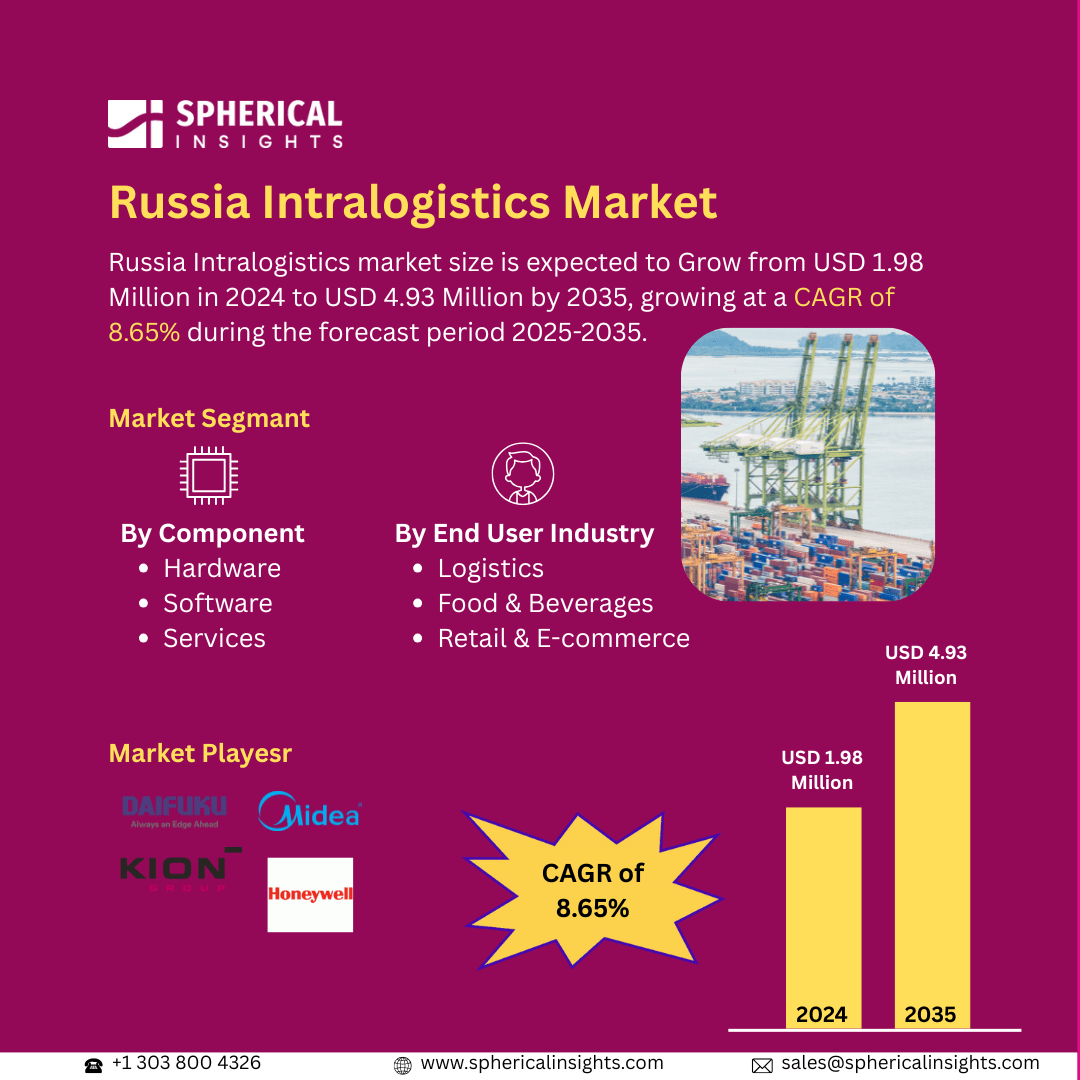Global Space Technology (SpaceTech) Market Size To Exceed USD 852.2 Billion By 2033
According to a research report published by Spherical Insights & Consulting, The Global Space Technology (SpaceTech) Market Size is Expected to Grow from USD 419.3 Billion in 2023 to USD 852.2 Billion by 2033, at a CAGR of 7.35% during the forecast period 2023-2033.
Browse 210 market data Tables and 45 Figures spread through 190 Pages and in-depth TOC on the Global Space Technology (SpaceTech) Market Size, Share, and COVID-19 Impact Analysis, By Type (Space Vehicles, Deep-space Communication, and In-space Propulsion), By Application (Navigation & Mapping, Meteorology, Disaster Management, Satellite Communication, Satellite Television, Remote Sensing, and Science & Engineering), By End -User (Government, Military, and Commercial), and By Region (North America, Europe, Asia-Pacific, Latin America, Middle East, and Africa), Analysis and Forecast 2023 - 2033
The global space technology (spacetech) market refers to the industry that includes deep space exploration, space tourism, launch services, and satellite production. Innovation in telecommunications, defense, and climate monitoring is supported by developments in reusable rockets, artificial intelligence, and quantum computing. The business is growing as a result of increased commercialization and private investment, which contributes to the demand for interplanetary exploration and satellite-based services. Key driving factors for the growth of the space technology (spacetech) market include increasing private investments from businesses that are reducing expenses and boosting innovation, such as SpaceX, Blue Origin, and Rocket Lab. Satellite technological developments, such as smaller satellites and improved propulsion systems, are increasing effectiveness and broadening the variety of applications in navigation, communication, and Earth observation. However, development is hampered by an array of factors, including high costs, stringent regulations, risks of space debris, technological constraints, cybersecurity threats, reliance on government funding, and public mistrust. These factors all continued creativity and legislative reforms.
The space vehicles segment accounted for the largest revenue share in 2023 and is projected to grow at a significant CAGR during the forecast period.
On the basis of type, the global space technology (spacetech) market is divided into space vehicles, deep-space communication, and in-space propulsion. Among these, the space vehicles segment accounted for the largest revenue share in 2023 and is projected to grow at a significant CAGR during the forecast period. The segment growth is attributed to the increasing need for satellites, reusable rocket technology's cost reductions, increased private investment, frequent launches, and expanding uses in deep space exploration, communication, earth observation, and defense.
The navigation & mapping segment accounted for the highest revenue share in 2023 and is anticipated to grow at a substantial CAGR during the forecast period.
On the basis of application, the global space technology (spacetech) market is divided into navigation & mapping, meteorology, disaster management, satellite communication, satellite television, remote sensing, and science & engineering. Among these, the navigation & mapping segment accounted for the highest revenue share in 2023 and is anticipated to grow at a substantial CAGR during the forecast period. The segment growth is driven by increasing demand for location-based services, asset management, autonomous cars, smart cities, route optimization, and accurate tracking, which promotes widespread embrace and continuing technological developments.
The government segment accounted for the highest share in 2023 and is anticipated to grow at significant CAGR during the forecast period.
On the basis of end use, the global space technology (spacetech) market is divided into government, military, and commercial. Among these, the government segment accounted for the highest share in 2023 and is anticipated to grow at significant CAGR during the forecast period. The segment growth is driven by significant R&D expenditures, state-of-the-art technological development, global cooperation, commercial partnerships, and space exploration applications.
North America is anticipated to hold the largest share of the global space technology (spacetech) Market over the predicted timeframe.
North America is anticipated to hold the largest share of the global space technology (spacetech) market over the predicted timeframe. The regional market growth can be attributed because of significant private sector expenditures, NASA's innovative studies, and strong government programs. Initiatives such as Artemis stimulate innovation and encourage partnerships with private businesses. This region is a global center for space exploration, commercialization, and cutting-edge aerospace technology because of recent technological developments, a flourishing start-up ecosystem, and an increase in satellite launches.
Asia Pacific is expected to grow at the fastest CAGR in the global space technology (spacetech) market during the forecast period. The regional market growth can be attributed to prompted satellite deployments, strong government spending, and ambitious initiatives in China, India, and Japan. India's Chandrayaan missions, China's BeiDou navigation system, and lunar exploration are instances of historical landmarks that strengthen regional supremacy. The region is now a major contributor to global space achievements thanks to policy changes, international partnerships, and increased economic interest that further spur innovation.
Company Profiling
Major vendors in the global space technology (spacetech) market are Boeing, China Aerospace Science and Technology Corporation, General Dynamics Corporation, Hedron, Hindustan Aeronautics Limited, Honeywell International Inc., ICEYE, Lockheed Martin Corporation, Maxar Technologies, Northrop Grumman Corporation, OHB System AB, and Others.
Key Target Audience
- Market Players
- Investors
- End-users
- Government Authorities
- Consulting and Research Firm
- Venture capitalists
- Value-Added Resellers (VARs)
Recent Development
- In March 2025, Rocket Lab successfully launched the final five satellites for Kinéis, completing a 25-satellite Internet of Things (IoT) constellation. This network enhances global data connectivity, supporting applications in maritime tracking, environmental monitoring, and industrial logistics.
Market Segment
This study forecasts revenue at global, regional, and country levels from 2023 to 2033. Spherical Insights has segmented the global space technology (spacetech) market based on the below-mentioned segments:
Global Space Technology (SpaceTech) Market, By Type
- Space Vehicles
- Deep-space Communication
- In-space Propulsion
Global Space Technology (SpaceTech) Market, ByApplication
- Navigation & Mapping
- Meteorology
- Disaster Management
- Satellite Communication
- Satellite Television
- Remote Sensing
- Science & Engineering
Global Space Technology (SpaceTech) Market, By End User
- Government
- Military
- Commercial
Global Space Technology (SpaceTech) Market, Regional
- North America
- Europe
- Germany
- Uk
- France
- Italy
- Spain
- Russia
- Rest of Europe
- Asia Pacific
- China
- Japan
- India
- South Korea
- Australia
- Rest of Asia Pacific
- South America
- Brazil
- Argentina
- Rest of South America
- Middle East & Africa
- UAE
- Saudi Arabia
- Qatar
- South Africa
- Rest of the Middle East & Africa



